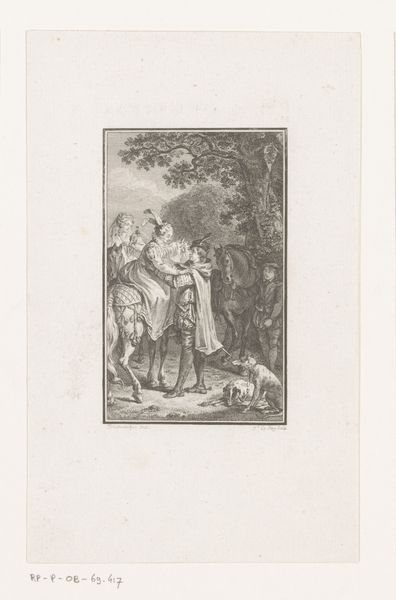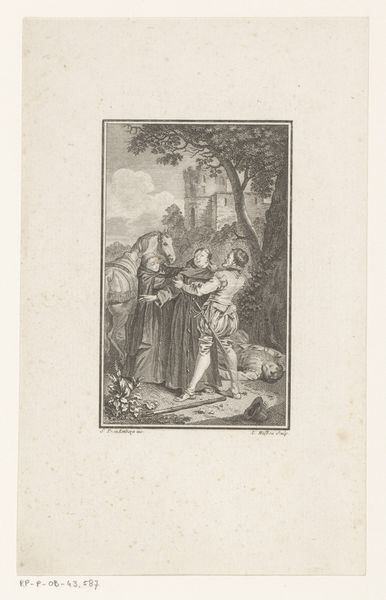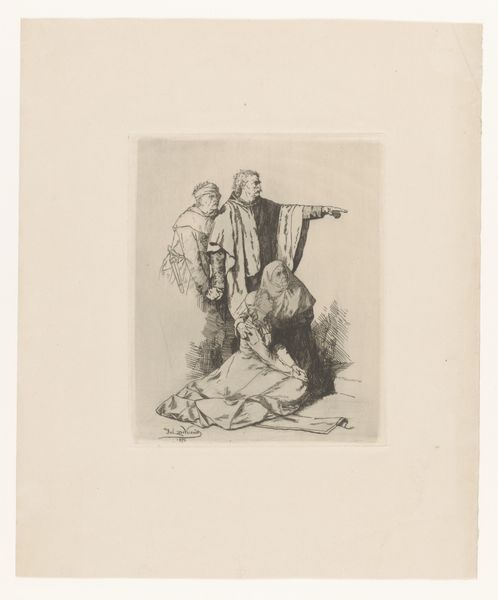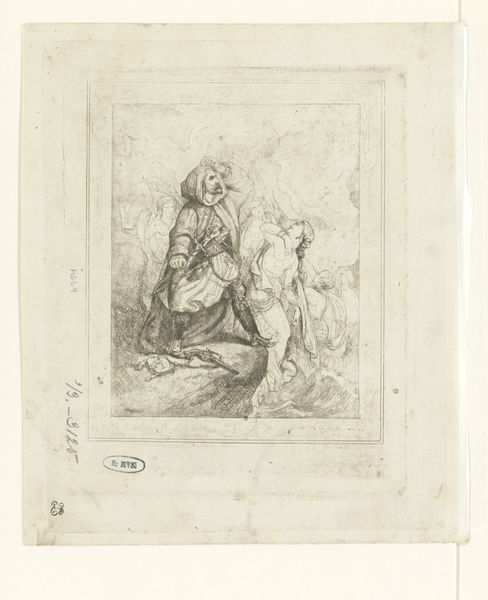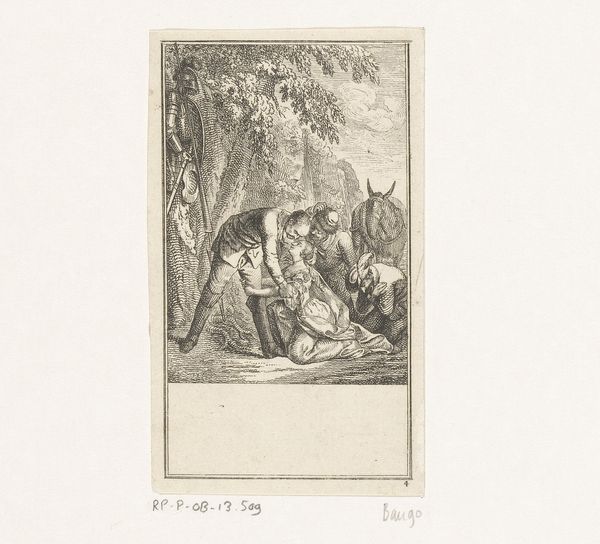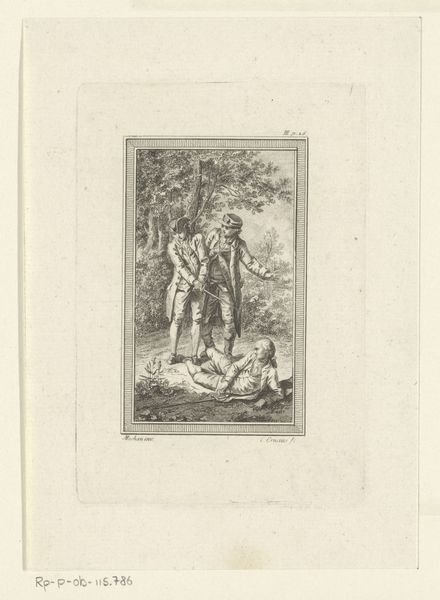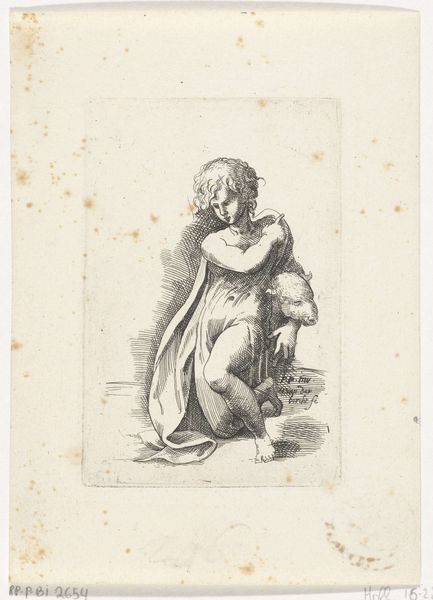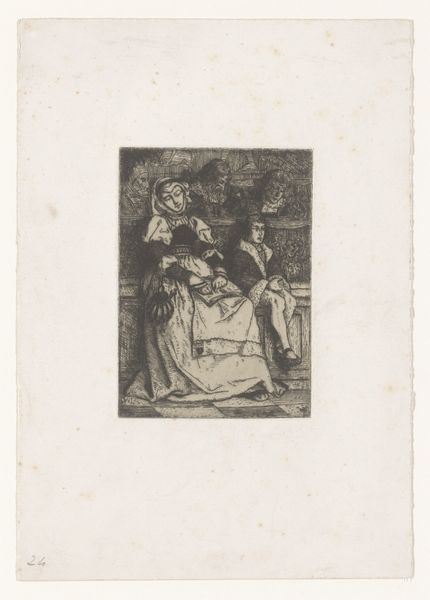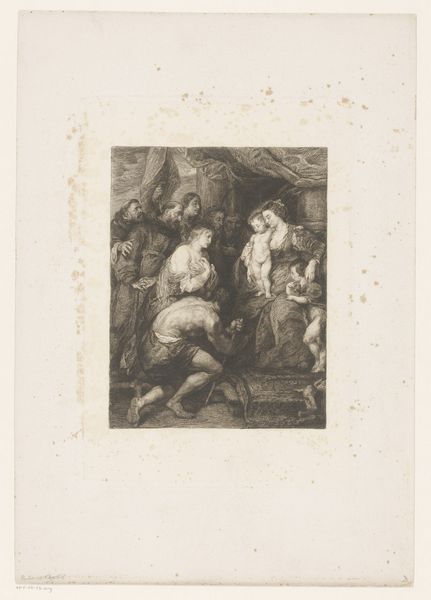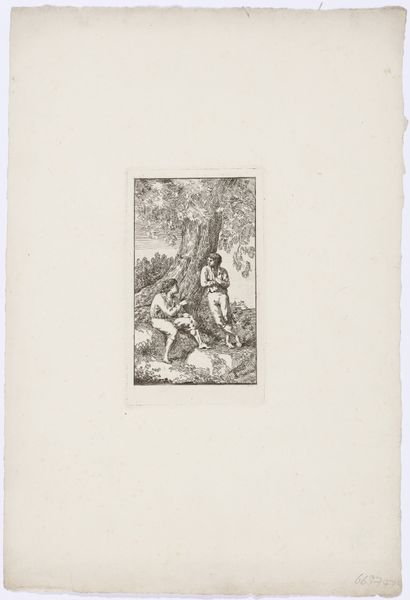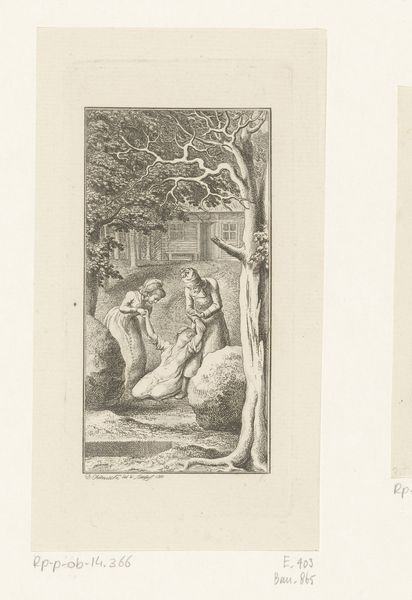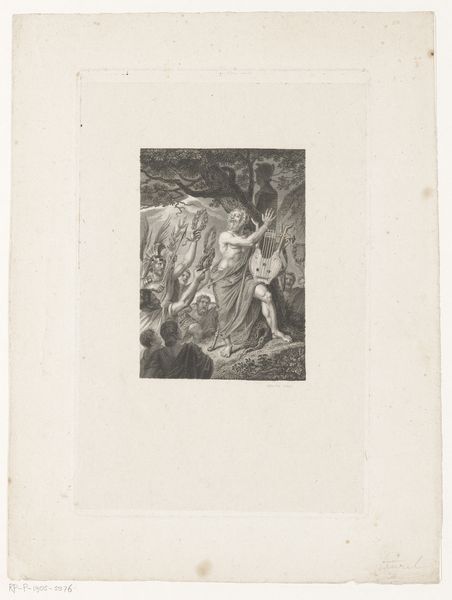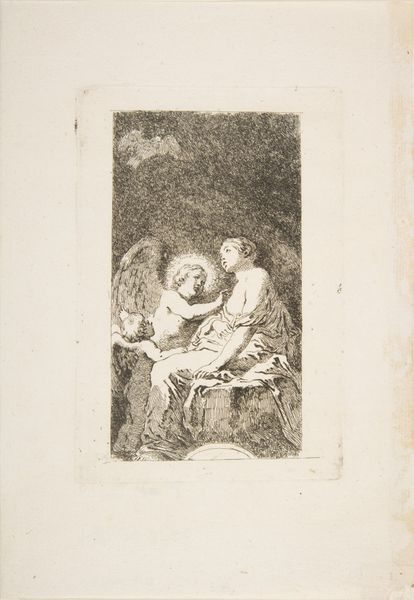
drawing, print, etching
#
portrait
#
drawing
# print
#
etching
#
pencil sketch
#
figuration
#
ink drawing experimentation
#
romanticism
Dimensions: height 124 mm, width 104 mm
Copyright: Rijks Museum: Open Domain
Editor: This is "Geknielde oude man," or "Kneeling Old Man," an etching made sometime between 1805 and 1844. It's currently housed here at the Rijksmuseum and attributed to Ignace-Joseph de Claussin. The old man's pose is compelling. What do you see in the composition of this print? Curator: The most striking formal element is, I think, the use of line. Consider the stark contrast between the meticulously rendered figure and the comparatively abstract representation of the surrounding foliage. The diagonal lines forming the undergrowth guide the eye upward toward the figure's clasped hands and contemplative face, emphasizing the sitter's devout concentration. Note too how the use of light and shadow sculpt the figure’s form, giving a sense of depth and weight to the kneeling man. Editor: It feels unbalanced; like, the man is well-defined, but the natural background dissolves into something more abstract. Does this tension add meaning to the artwork? Curator: Precisely. That tension highlights the interiority of the man, distinguishing it from the more roughly hewn lines of exterior nature. Also note the relationship between form and function of the material. As a print, its reproducibility invites the observer to look into the soulfulness of the scene, which further enriches our viewing experience. Editor: That's insightful! I hadn’t considered how the interplay of sharp detail and looser etching contribute to the subject's isolation and thoughtfulness. Curator: This formal analysis can help us decode some of the content or thematics of this scene, beyond simple representation. Editor: I’ll definitely keep that in mind for future viewings. Thanks for expanding my perspective on interpreting art through its intrinsic visual language!
Comments
No comments
Be the first to comment and join the conversation on the ultimate creative platform.
